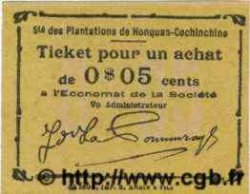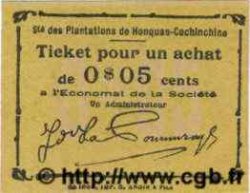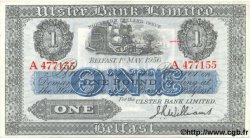b26_0352 - 5 Cents INDOCINA FRANCESE 1920
* Abbiamo più esemplari, quindi è probabile che la banconota ricevuta abbia un numero di serie diverso.


non disponibile.
Articolo venduto sul nostro negozio
Prezzo : 289.65 €
Articolo venduto sul nostro negozio
Prezzo : 289.65 €
Valore facciale : 5 Cents
Data: (1920)
Provincie/Banche Société des Plantations de Honquan, Cochinchine
Altro riferimento KM.215
Commento
Émission de nécessité de cette plantation, uniface, imprimé en noir sur fond jaune, carton crème. Ces "billets de nécessité" avaient une double fonction : éviter de devoir alimenter l'économat de la Société avec de la monnaie mais surtout concentrer les revenus des travailleurs journaliers sur les boutiques et services proposés dans la plantation, par l'employeur-propriétaire. Cette technique, mieux connue en Amérique du Sud, permet en pratique de récupérer le salaire versé en échange des moyens de substistance des employés. Il les empêche aussi de quitter la plantation puisqu'il rend difficile la constitution de réserves et d'économies en monnaie nationale.
Necessity issue of this plantation, single-sided, printed in black on a yellow background, cream cardboard. These \\\"necessity notes\\\" had a dual function: to avoid having to supply the Company's commissary with coin but above all to concentrate the income of day laborers on the shops and services offered on the plantation, by the employer-owner. This technique, better known in South America, allows in practice to recover the salary paid in exchange for the employees' means of subsistence. It also prevents them from leaving the plantation since it makes it difficult to build up reserves and savings in national coin
Necessity issue of this plantation, single-sided, printed in black on a yellow background, cream cardboard. These \\\"necessity notes\\\" had a dual function: to avoid having to supply the Company's commissary with coin but above all to concentrate the income of day laborers on the shops and services offered on the plantation, by the employer-owner. This technique, better known in South America, allows in practice to recover the salary paid in exchange for the employees' means of subsistence. It also prevents them from leaving the plantation since it makes it difficult to build up reserves and savings in national coin








 Segnalare un errore
Segnalare un errore Stampate la pagina
Stampate la pagina Condividi mia selezione
Condividi mia selezione Fai una domanda
Fai una domanda Consegnare / vendere
Consegnare / vendere
 Descrittivo
Descrittivo















